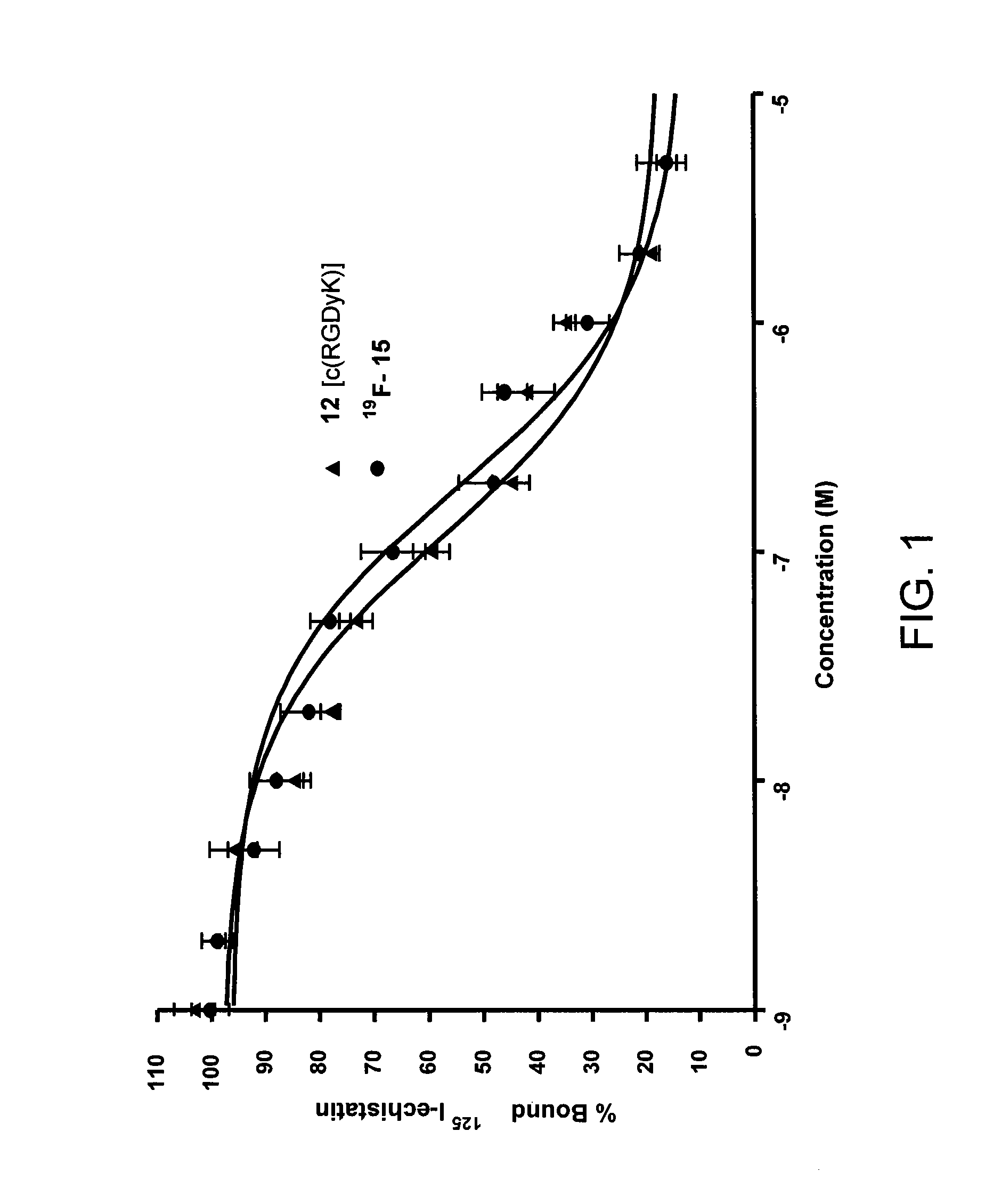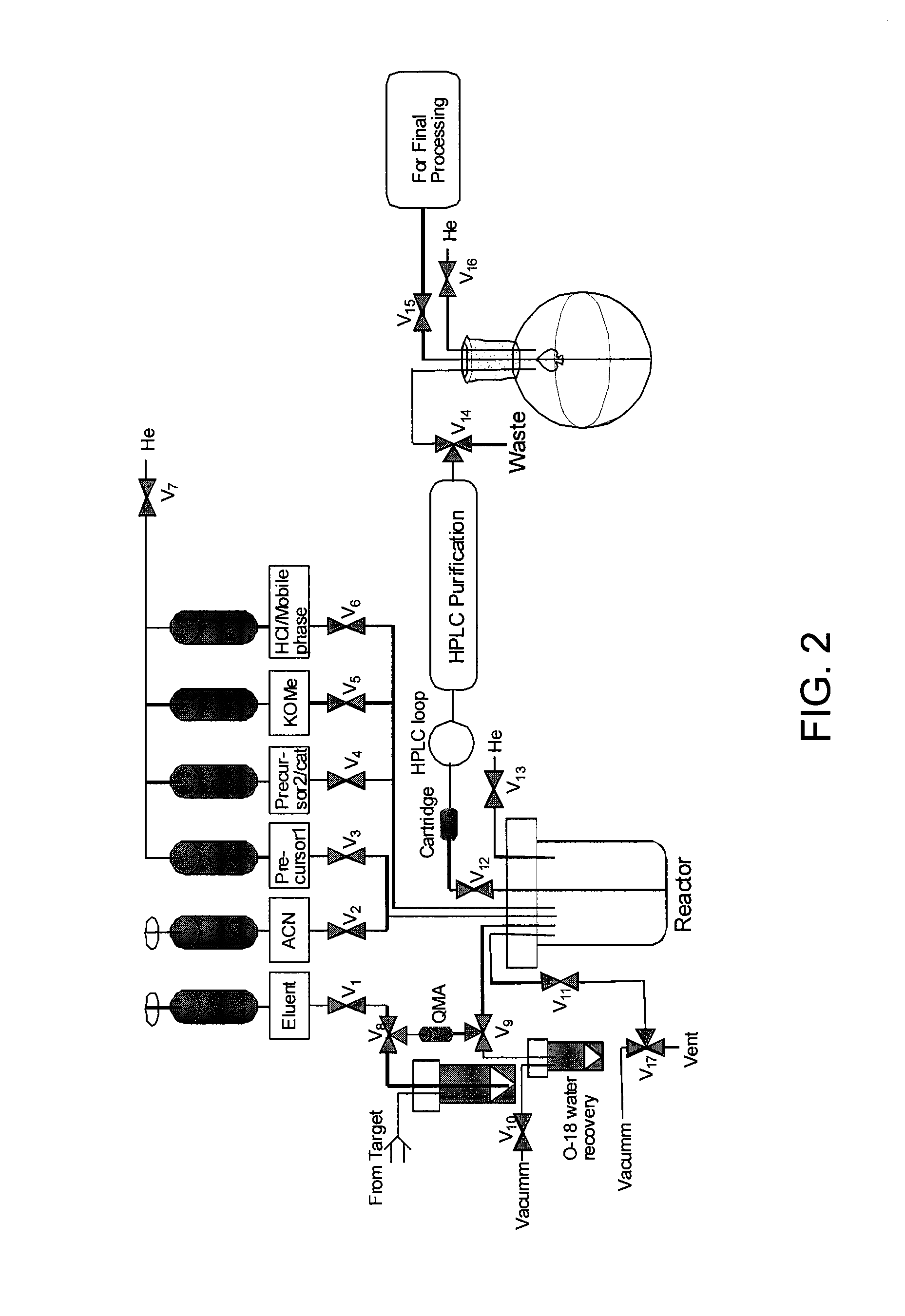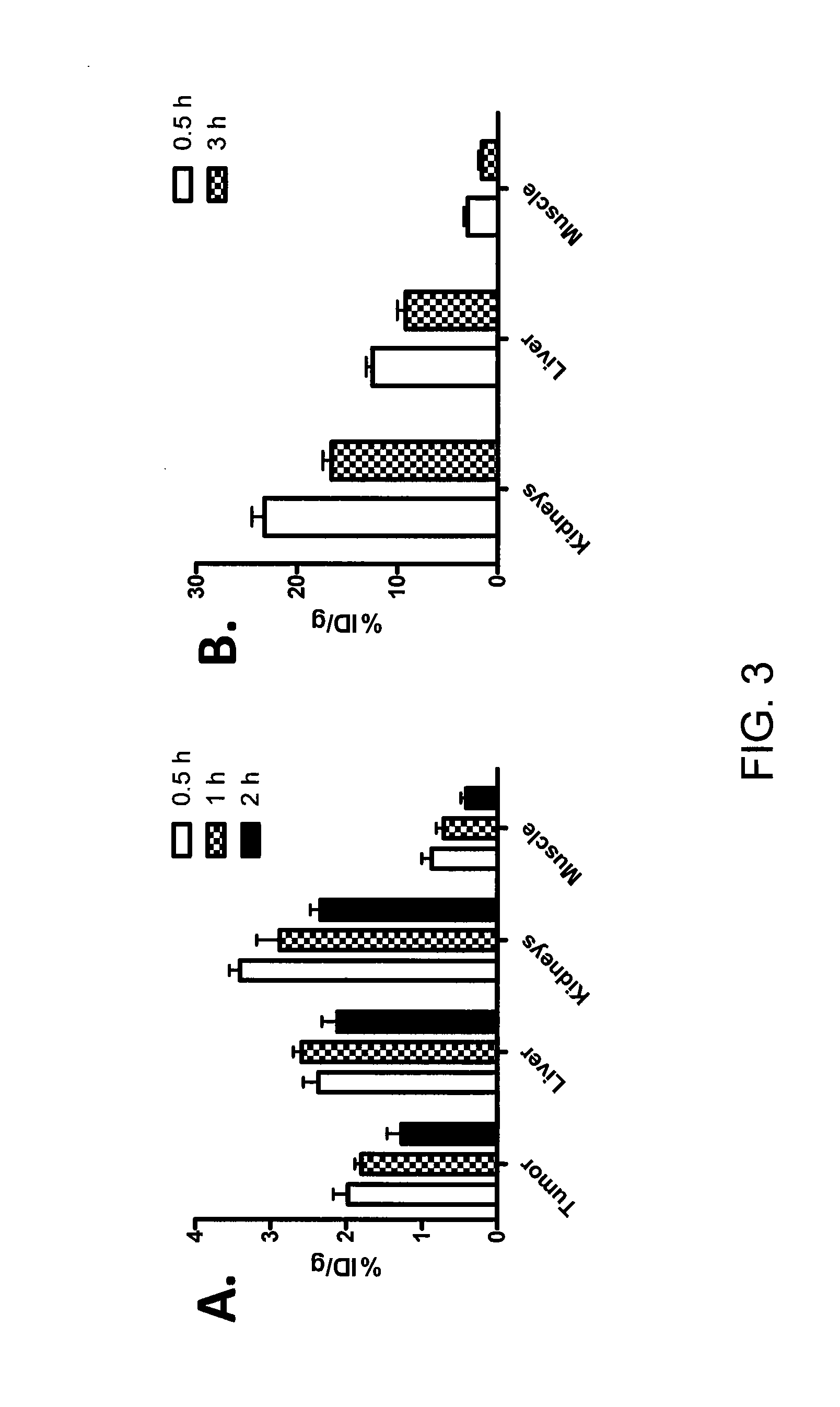Tetrazine-trans-cyclooctene Ligation for the Rapid Construction of Radionuclide Labeled Probes
- Summary
- Abstract
- Description
- Claims
- Application Information
AI Technical Summary
Benefits of technology
Problems solved by technology
Method used
Image
Examples
examples
General Considerations
[0051]All commercially available chemical reagents were used without further purification. Chromatography was performed using Silacycle P60 silica gel. All moisture sensitive reactions were carried out in glassware that was flame-dried under vacuum and cooled under nitrogen. Solid phase extraction cartridges (silica gel, 900 mg) were purchased from Waters. Ion exchange cartridges were purchased from ABX (Germany).
Z)-2-(cyclooct-4-en-1-yloxy)acetic acid
[0052]Sodium hydride (1.14 g, 26.4 mmol) was added to a flame dried round bottom flask. The NaH was washed with dry hexane (10 mL) and then decanted. Dry tetrahydrofuran (15 mL) was added and the mixture was allowed to stir at room temperature. cis-Cyclooctene-4-ol (P. Lombardi, Chemistry and Industry 1990, 21, 708) (0.834 g, 6.61 mmol) in tetrahydrofuran (10 mL) was added to the flask. The mixture was stirred and heated to reflux for 1 hour. α-Bromoacetic acid (0.919 g, 6.61 mmol) in tetrahydrofuran (25 mL) was a...
PUM
| Property | Measurement | Unit |
|---|---|---|
| Capacitance | aaaaa | aaaaa |
| Temperature | aaaaa | aaaaa |
| Temperature | aaaaa | aaaaa |
Abstract
Description
Claims
Application Information
 Login to View More
Login to View More - R&D
- Intellectual Property
- Life Sciences
- Materials
- Tech Scout
- Unparalleled Data Quality
- Higher Quality Content
- 60% Fewer Hallucinations
Browse by: Latest US Patents, China's latest patents, Technical Efficacy Thesaurus, Application Domain, Technology Topic, Popular Technical Reports.
© 2025 PatSnap. All rights reserved.Legal|Privacy policy|Modern Slavery Act Transparency Statement|Sitemap|About US| Contact US: help@patsnap.com



